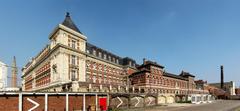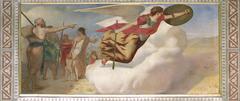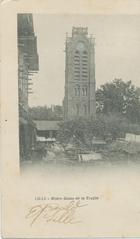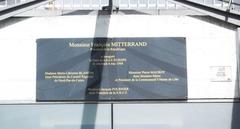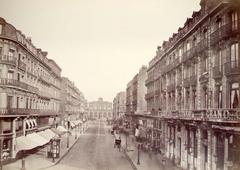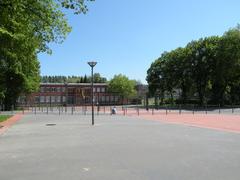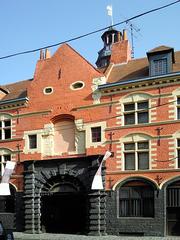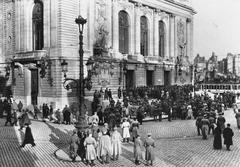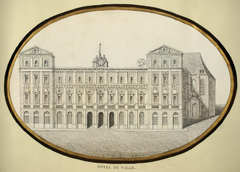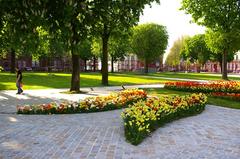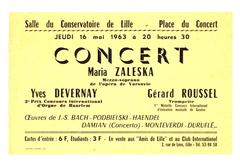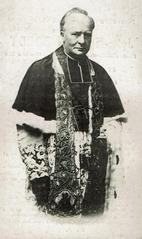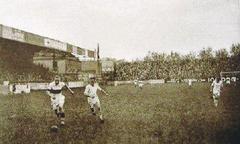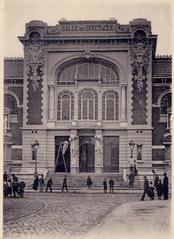Complete Guide to Visiting the Monument Au Pigeon Voyageur in Lille, France (2025)
Date: 03/07/2025
Introduction
The Monument Au Pigeon Voyageur in Lille, France, is a powerful and unique tribute to the carrier pigeons and their handlers who played a crucial role during wartime—especially in World War I. Erected in 1936, the monument honors these often-overlooked heroes of communication, whose service ensured messages could traverse dangerous, battle-ravaged landscapes when standard lines of communication failed. Set within the tranquil Jardin Vauban and near the historic Citadelle de Vauban, the monument is an accessible and reflective site, offering visitors an opportunity to engage with Lille’s rich military and cultural heritage.
This guide provides comprehensive, up-to-date information for planning your visit: including opening times, ticket details, accessibility, nearby attractions, insights into the monument’s history and design, and tips for making the most of your experience in Lille.
Historical Context: The Role of Carrier Pigeons in War
Carrier pigeons have been invaluable messengers for thousands of years, used by ancient armies and reaching their strategic peak during World War I. When conventional communication—telegraph lines, telephones—was destroyed by artillery, pigeons became the only reliable means to deliver critical messages across enemy lines. Their speed, homing instinct, and resilience made them indispensable.
During World War I, over 20,000 carrier pigeons served in the French military, many bred in the Nord region around Lille (Ville de Lille). Their heroic missions included delivering information that saved lives and altered the outcomes of battles. Legendary birds like Le Vaillant, who flew through bombardment to reach French command during the siege of Fort de Vaux, have become symbols of loyalty and courage (Connexion France).
Handlers, known as “coulonneux,” often risked their lives to protect their pigeons, sometimes facing execution for refusing to surrender their lofts to occupying forces (Les Soirées de Paris). The monument commemorates both these avian heroes and their human caretakers.
Monument Origins, Design, and Artistic Vision
Commissioning and Inauguration
The monument was proposed by local veterans and pigeon fanciers after World War I and commissioned in the early 1930s with the backing of the Fédération Nationale des Sociétés Colombophiles de France. It was inaugurated on April 13, 1936, with national attention and attendance by military and civic leaders (Chemins de Mémoire).
Artistic Features
Designed by Lille-born sculptor Georges Armand Vérez, the monument blends realism and symbolism. The central bronze figure, “La Paix,” depicts a woman releasing a flock of pigeons—representing hope, resilience, and the enduring partnership between humans and animals. The base, crafted from local stone, features bas-reliefs of pigeon lofts and scenes of wartime communication, with inscriptions honoring the fallen pigeons and breeders.
Key engraved phrase:
“Aux pigeons voyageurs morts pour la patrie, 1914–1918”
(“To the carrier pigeons who died for the homeland, 1914–1918.“)
Battle names such as Verdun, Douaumont, and Flanders are inscribed, anchoring the monument in the broader narrative of the Great War.
Setting
The monument stands in the scenic Jardin Vauban, a public park in central Lille, surrounded by other memorials, shaded paths, and relaxing benches. Its visible, accessible location encourages reflection and remembrance (Lille Tourisme).
Visiting Information
Opening Hours and Admission
- Jardin Vauban Hours: Open daily, typically from 7:00 AM to 8:00 PM (may vary with season).
- Monument Access: The monument is outdoors and freely accessible during park hours. No tickets or reservations are required.
How to Get There
- By Metro: Line 1 or 2, stop at “Rihour”; a short walk from the monument.
- By Bus: Several lines serve the city center.
- By Car: Limited street parking nearby; public transport is recommended.
- Nearby Landmarks: Located at the intersection of avenue Mathias Delobel and avenue du 43ème RI, at the entrance to Parc Zoologique de Lille and near the Citadelle.
Accessibility
- Wheelchair accessible: Paved and level sidewalks lead directly to the monument.
- Benches and shaded areas are available for rest.
Visitor Experience and Travel Tips
- Best Times to Visit: Spring and autumn offer pleasant weather and beautiful park scenery. Early morning or late afternoon provides optimal lighting for photos.
- Photography: Visitors are welcome to take photos; the monument’s sculptural details are especially striking in natural daylight.
- Guided Tours: While not offered daily, the Lille tourism office occasionally includes the monument in city heritage tours. Educational programs are available for schools and groups (Lille Tourisme).
- Commemorative Events: The site hosts ceremonies on Armistice Day (November 11) and other military anniversaries, often attended by veterans and pigeon-fancier associations.
Nearby Attractions
Enhance your visit by exploring other nearby Lille historical sites:
- Citadelle de Lille: A 17th-century fortress surrounded by parkland.
- Palais des Beaux-Arts de Lille: One of France’s most important fine arts museums.
- Grand Place: The city’s main square, alive with markets and historic architecture.
- Old Lille (Vieux Lille): Wander cobblestone streets lined with boutiques and cafes.
Monument Preservation: Challenges and Community Efforts
Vandalism and Environmental Wear
The monument has faced repeated vandalism, including graffiti and physical damage to its base in recent years (Epoch Times, Le Parisien). The city responds with restoration projects, using digital modeling and archival research to guide repairs, and local heritage groups advocate for improved surveillance and public awareness.
Restoration and Maintenance
Conservation actions include regular cleaning, re-gilding of inscriptions, and stonework repairs. The heritage department of Lille conducts periodic inspections to ensure the monument’s continued integrity (Ville de Lille).
Frequently Asked Questions (FAQ)
Q: What are the opening hours for the Monument Au Pigeon Voyageur?
A: The monument is accessible during Jardin Vauban park hours, typically 7:00 AM to 8:00 PM.
Q: Is there an entrance fee or tickets required?
A: No. The monument and park are free and open to the public.
Q: Are guided tours available?
A: Yes, occasionally through the Lille tourism office or local history groups.
Q: Is the site wheelchair accessible?
A: Yes, the park and monument area are accessible for visitors with mobility needs.
Q: Can I take photographs?
A: Absolutely—photography is encouraged.
Conclusion and Planning Your Visit
The Monument Au Pigeon Voyageur is a profound symbol of courage, communication, and the human-animal bond during wartime. Its evocative design and tranquil park setting make it a must-see for anyone interested in Lille’s historical sites, military history, or public art. The monument’s accessibility, free entry, and proximity to other cultural landmarks ensure it is an easy and meaningful addition to any Lille itinerary.
For the fullest experience, combine your visit with other historical attractions, participate in commemorative events, and take time to reflect on the sacrifices honored here. To become even more engaged, download the Audiala app for curated tours and real-time updates, and follow Lille’s tourism offices for news on guided experiences and events.
Additional Resources and Official Links
For further information, updates on restoration, and interactive guided tours:
- Ville de Lille – Official Monument Page
- Connexion France – French Army Pigeon Platoon
- Chemins de Mémoire – National Memory Route
- Zoom Sur Lille – Local Heritage & News
- Atlas Obscura – Monument Profile
- Lille Tourism – Monuments and Heritage
- Les Soirées de Paris
Related Articles:
